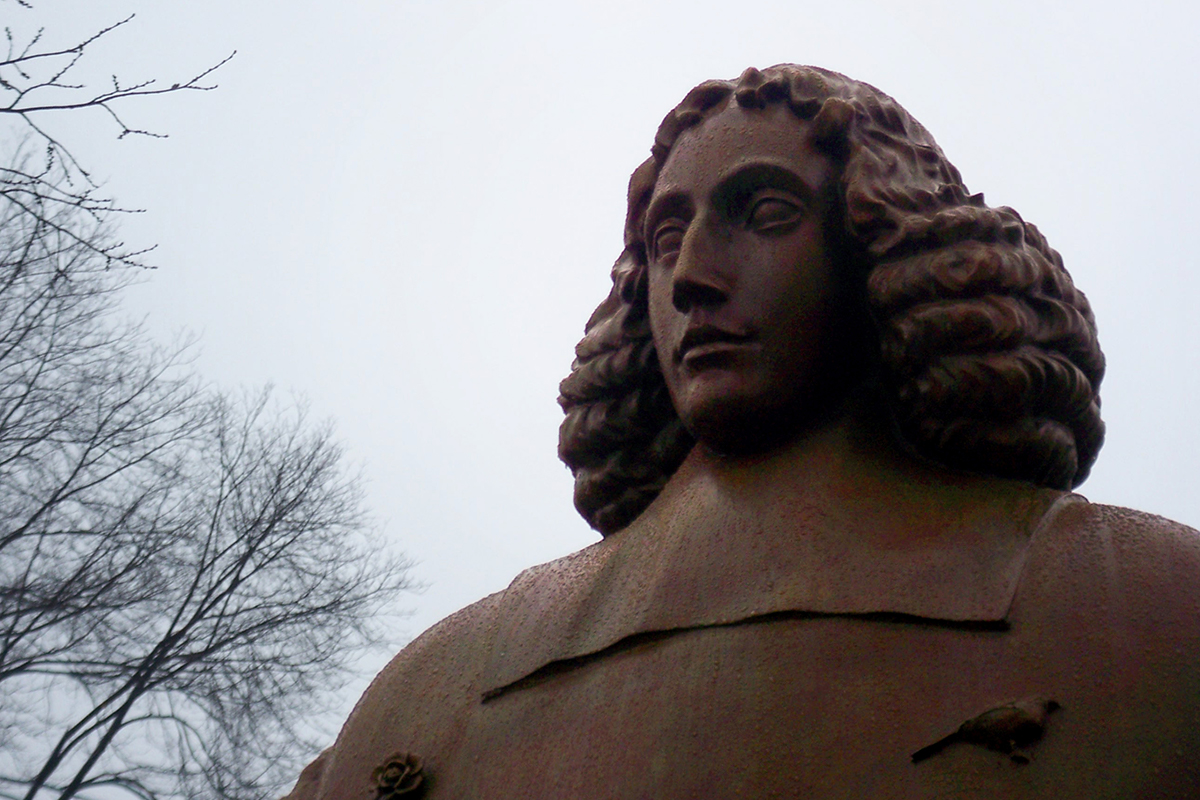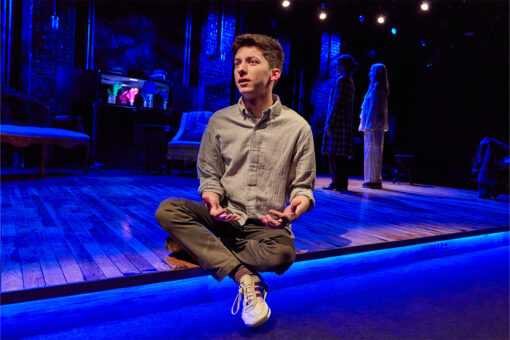It is difficult not to be left in shock when one reads for the first time the decree of excommunication that expelled famed Jewish philosopher Baruch Spinoza from his congregation in Amsterdam.
“We excommunicate, expel, curse and damn Baruch de Spinoza […] Cursed be he by day and cursed be he by night; cursed be he when he lies down and cursed be he when he rises up. Cursed be he when he goes out and cursed be he when he comes in. The Lord will not spare him,” ruled the text, proclaimed on July 27, 1656, with the utmost wrath and without any mercy whatsoever.
“No one should communicate with him, not even in writing, nor accord him any favor nor stay with him under the same roof nor [come] within four cubits in his vicinity; nor shall he read any treatise composed or written by him,” concluded the writ that would be permanently bound, even up to this day, and that determined the rest of the philosopher’s existence forever.
Interestingly enough, Spinoza, who would live singled out, harassed, and persecuted for his ideas, beliefs, and values for most of his life, faced similar dilemmas many contemporary Jews face today, like how to deal with one’s own identity and ideals in a society that might not always be ready to embrace or understand them.
Spinoza was born to a Sephardic family on November 24, 1632, in the heart of the Jewish quarter of Amsterdam. His parents were conversos — descendants of Jews who had fled Spain and then Portugal with the Inquisition arrival at the end of 1490.
In the Dutch capital, Spinoza began studying both theology and Latin humanities at the Ez Schachim rabbinical school. Gradually, scientific curiosity drove him away from religious orthodoxy. The young Jew distinguished himself not only for his intellectual skills but also for his curiosity and rebelliousness. He soon began to read and study on his own the works of philosophers and thinkers such as Cicero, Seneca, Hobbes and Descartes. They were outside the community’s doctrines and far removed from the Jewish philosophical precepts of the time. It is believed, by historians and modern philosophers, that this might have been one of the reasons behind the community’s expulsion — an assertion that is difficult to prove since the anathema and other documents from the time fail to mention what Spinoza’s “abominable heresies” and “monstrous deeds” actually were.
It may come as a surprise to find out that Spinoza didn’t have to convert to another religion after his excommunication. Contrary to his medieval ancestors, who had been forced to embrace the world of Christianity, he was able to live as a Jew on the fringes, not necessarily identifying himself with the institutions of Jewish life but not being bound by the obligation to choose another religion — a situation that is normal for many Jews today and which we take for granted, but which at that time was inconceivable to imagine in any other place than the relatively liberal Dutch Golden Age.
In a way, Spinoza represents what we all can recognize as the modern secular Jew who is completely detached from rabbinic Judaism. For several Jewish historians and thinkers, Spinoza is considered to be one of the first secular Jews, mostly because he paid a high price for his decision to live a secular life while keeping his Jewish identity. Reform Rabbi Barry L. Schwartz explains it in his book “Judaism’s Great Debates” that, “Even though he never again had contact with the Jewish community, Spinoza did not renounce his Jewishness. He declined all overtures to convert to Christianity and continued to study traditional Jewish thought—if only to refute it. […] In short, in being the first great Jewish philosopher to adopt an ideology of pure reason, to the utter exclusion of revelation, Spinoza also became the archetype of the secular Jew. And, as a secular Jew, he offered ideas that have profoundly impacted Jewish thought and belief ever since.” It was precisely his secularism that made the philosopher turn into the controversial and iconoclast figure he is today.
Before being considered one of the greatest thinkers and forbears of modern Judaism’s foundations, Spinoza first wrote extensively about his struggles with religion, God, and personal identity. One of the questions that most concerned his thoughts was: What is happiness, and how can one achieve it? How do you live an ethical and meaningful life?
The answers to these issues are scattered all across his magnum opus, “The Ethics“ (1665), in which he outlines a guide to transforming ourselves from within. Spinoza came to understand that the true revolution comes from within oneself, and that it is by transforming our emotions that we can change the world.
Spinoza posited three basic feelings that are fundamental, from which all other feelings arise: desire or appetite, which expresses our effort to persevere in our being; joy, which allows the increase of our capacity to act; and sadness, which diminishes this latter faculty.
Next, he tried to understand how the other affections — such as love and hatred, hope and fear, envy and compassion — are derived from these three fundamental feelings. All the affections are particular expressions of desire and will be a modality of joy if they increase our capacity to act or sadness if they diminish it. To put it another way, the force of desire allows us to transform the passions into energies that lead to greater assurance and happiness.
Spinoza’s entire thought rests on the idea that it will be much easier for an individual to come to terms with others if they are first in accord and agreement with themselves. If we can master sorrowful impulses (fear, anger, resentment, envy), then our lives will have meaning and purpose, provided that we are guided by reason.
As Spinoza remarked, “Men are torn by affects that are passions, they can be contrary to one another …[But] insofar as men live according to the guidance of reason, they must do only those things that are good for human nature, and hence, for each man.”
Through his written legacy and unconventional living, Spinoza teaches us that it is crucial to safeguard and cherish our convictions and never be swayed by other people’s ideas, beliefs or tenets. What makes Spinoza’s philosophy so interesting is that it is a philosophy of action — an area of thought that concerns the legal, epistemological, and ethical questions about freedom, belief, responsibility, motive, desire, purpose, and others — which is very much inherently rooted in Judaism, and can be seen in the tradition of study and analysis of halakhic and Talmudic texts.
The philosopher explains passion as a shortcoming concerning action and knowledge. It is imperative to highlight that passion within the notion of philosophy is a person’s emotional, primal drives that must be restrained to acquire wisdom. This differs from the mainstream definition of passion which has a positive connotation.
In this vein, passion, seen as suffering, implies a barrier for Spinoza, because when we are subject to the dominion of passions, therefore, we lack autonomy and freedom. In order to achieve happiness, he posits, it is indispensable that we shed the chains that passions imply and that we come to understand the world around us; only then will we cease to feel fear, hatred, resentment, anger, and frustration.
As Stеvеn Nаdlеr, professor of philosophy at the Univеrsity of Wisconsin-Madison and long-standing Spinozist, writes in his latest book “Think Least of Death: Spinoza on How to Give and How to Die, “the free person is the individual who, while experiencing passions, never lets those passions determine his actions; he always does what reason dictates. The free person is in control of himself. He is active rather than passive in what he does. His desire and behavior follow the command of reason, not the passions.”
In these current socio-political times, in which many Jews are faced with complex dilemmas around identity, putting together the pieces of each of the cultures and traditions pertaining to their own environment and upbringing, Spinoza’s radical reconstruction of Jewish ideas can provide an opening for moral strength and intellectual rediscovery.
Notwithstanding the criticisms and literal excommunication he endured, Spinoza persevered, gradually distancing himself from all those who sought to force him to think in a particular way that he didn’t subscribe to. After the herem (a ban or ostracism in Hebrew), the then 24-year-old, marginalized and with no one to turn to, moved to a suburb in the outskirts of Amsterdam from where, far from giving up, he continued his philosophical work part-time as a lens grinder while living in frugality and solitude until his death.
A true rarity of his time, Spinoza reminds us that despite the turbulent and intolerant climate in which one lives, the protection of our mental health, along with the defense and conviction of our own ideas, should always prevail and be above everything — and everyone — else.



